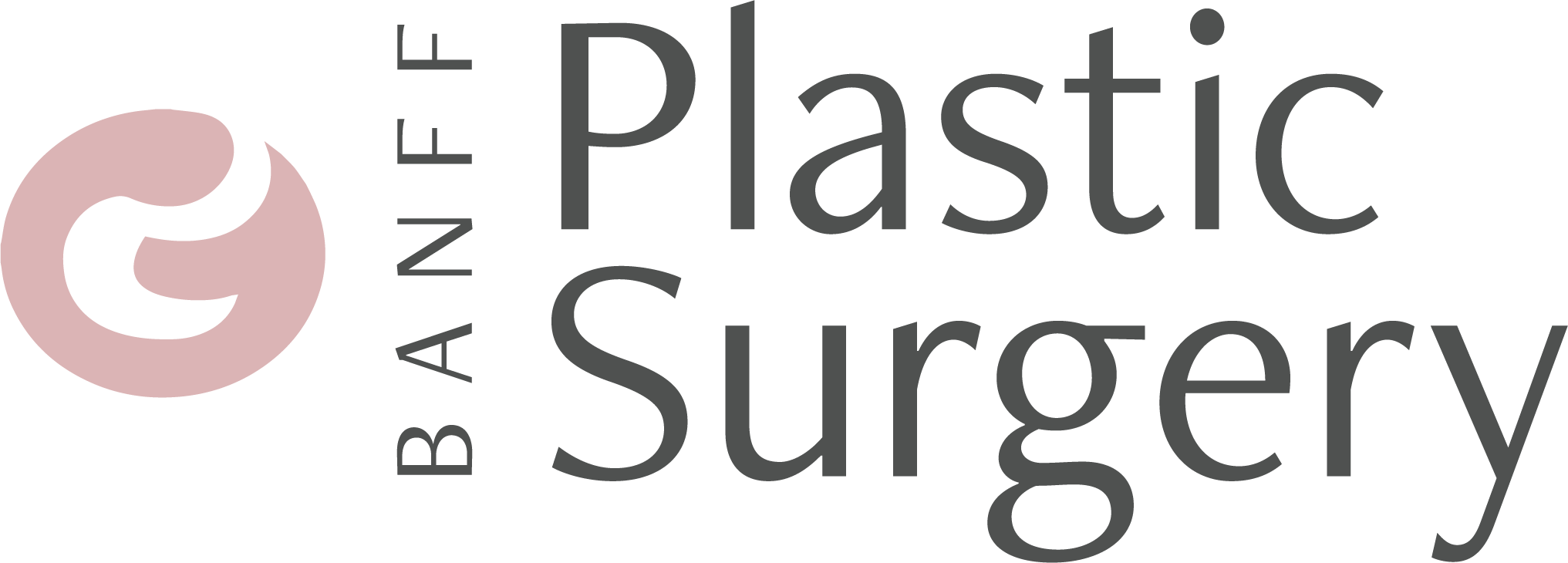Procedures
Breast Lift
(Mastopexy)
Is Breast Lift (Mastopexy) Right for You?
A breast lift (mastopexy) can give you a more youthful silhouette and the confidence to match. Many women tell us that they feel ‘matronly’ because they can’t go braless or wear nice bathing suits. A breast uplift can improve the projection or ‘perkiness’ of the breast and allow you to feel that you don’t always need to wear a bra. It can restore a woman’s sense of confidence in how she feels physically – with and without clothing.
Women looking for ways to enhance the appearance of their breasts have a number of options available to them today, including a mastopexy (or breast lift). Our patients often choose a breast lift when they are bothered by drooping, sagging breasts that affect their confidence and prevent them from wearing certain types of clothing. Dr. Hall-Findlay has provided our patients with breast lift procedures for more than three decades that produce a more youthful upper body profile. We take care to personalize every surgery to give our patients the best possible results for their unique proportions.
Dr Hall-Findlay is known around the world for her modifications of the vertical breast reduction procedure and she has adapted this method (often called the “Hall-Findlay” technique) to the breast lift. She gives teaching courses on all aspects of aesthetic breast surgery numerous times throughout the year and she has performed surgery for teaching purposes in numerous countries all over the world.
Her method not only uses shorter scars (lollipop rather than anchor scars), but it also gives a better shape (with more projection) and it has a more long-lasting shape (avoids bottoming-out with time).
Dr Hall-Findlay’s philosophy is to do the right thing (surgery or not) for the right patient at the right time for the right reason.
You can click on each heading below for more information.
If you’re comfortable with your breast size but would like a lift, then a mastopexy alone may help. While breast reduction removes skin and breast tissue, a mastopexy removes skin and rearranges breast tissue. We move the nipple, rather than removing it, to create a natural appearance with minimal disruption to the breast. We will then remove the excess skin and correct the sagging breast tissue, creating a more youthful projection and profile.
A mastopexy can raise sagging breast tissue, but it can’t raise the breast itself (the breast footprint) up higher on the chest wall. For patients who would like to improve fullness as well as breast projection, we may recommend combining the lift with breast augmentation to provide the desired result. We can also add liposuction in the area in front of the armpits and along the sides of the breast to enhance the breast shape.
Other patients may be concerned about a ski-jump type of slope in the upper half of the breast, even if they are happy with their breast size. In this case, we may recommend a reduction-augmentation (minus-plus procedure) that removes tissue in the lower portion of the breast and uses an implant to add fullness to the upper part.
The best candidate for breast lift surgery is a woman who is close to her ideal body weight, healthy, and a non-smoker. Patients must quit smoking before their surgery, because nicotine can interfere with blood supply and the healing process. It is important to have realistic expectations of the results that we can achieve with uplift surgery. Some patients are hoping for a “double push-up bra” look which can only be achieved with certain brassieres. Scarring is inevitable, but we will carefully place incisions to minimize visible scarring.
Many of our patients may have felt good about their breasts during pregnancy, but now feel deflated. Good candidates are often tired of feeling like they need to always wear a bra due to breast sagging. Many of our patients do not want to accept these changes; it’s time for them to invest in themselves. The newly positioned breasts may take time to settle but the technique that we use (lollipop) is long lasting. Patience with the process is important for a satisfactory outcome.
Being in good health, both physically and mentally, is required for optimal results, and it may be appropriate to wait. Your own schedule is an important consideration as well. While recovery from a breast uplift is surprisingly easy, you will need time off to heal after surgery. It takes one to two weeks to get back to normal activities and three to four weeks to return to a more active lifestyle. Patients with small children often worry about lifting them or being hit or kicked. Fortunately, while lifting may be uncomfortable, it won’t damage your results.
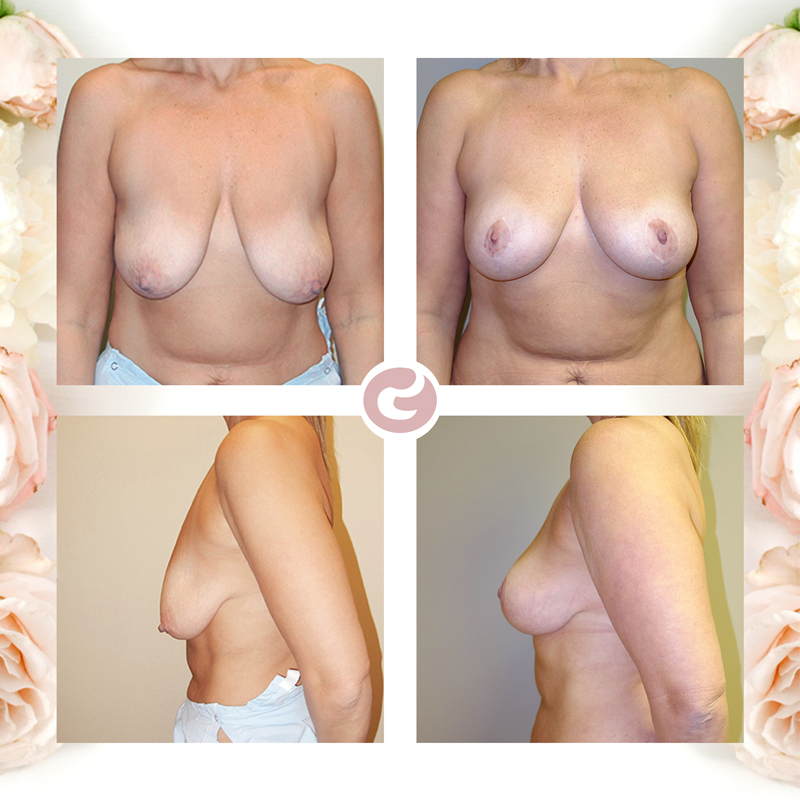
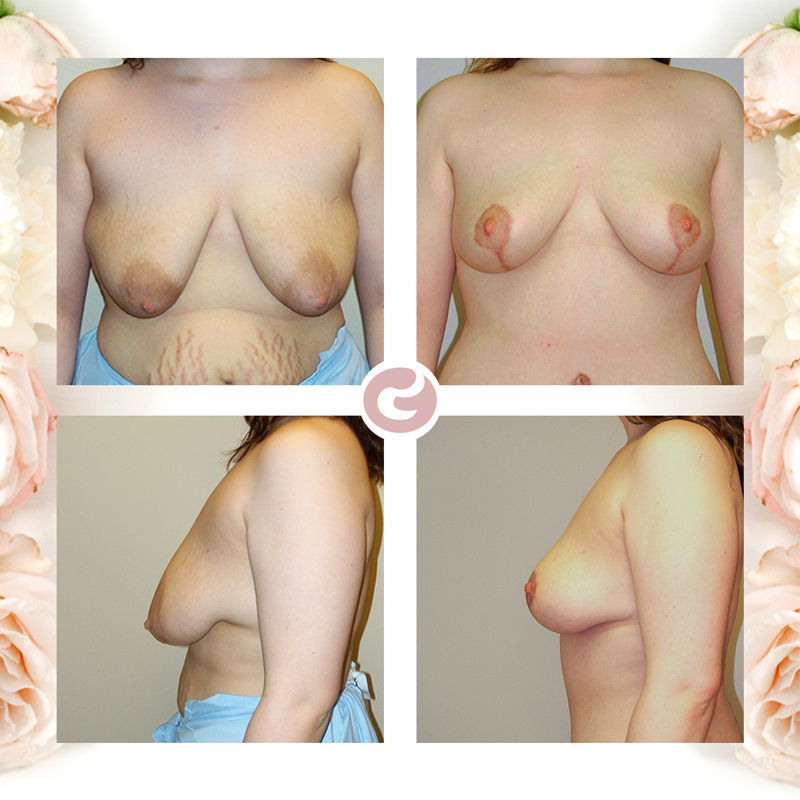
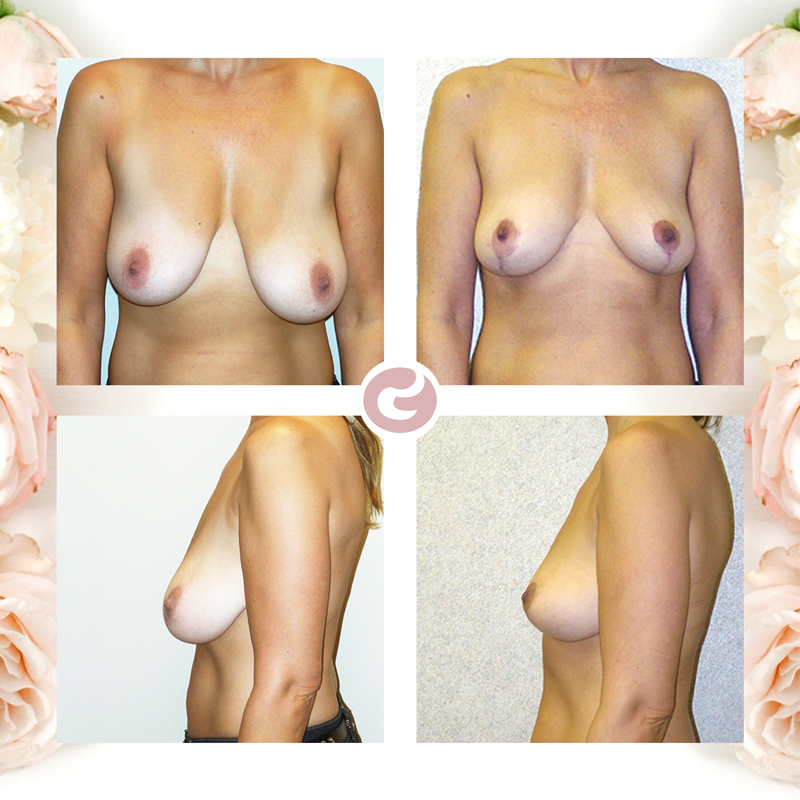
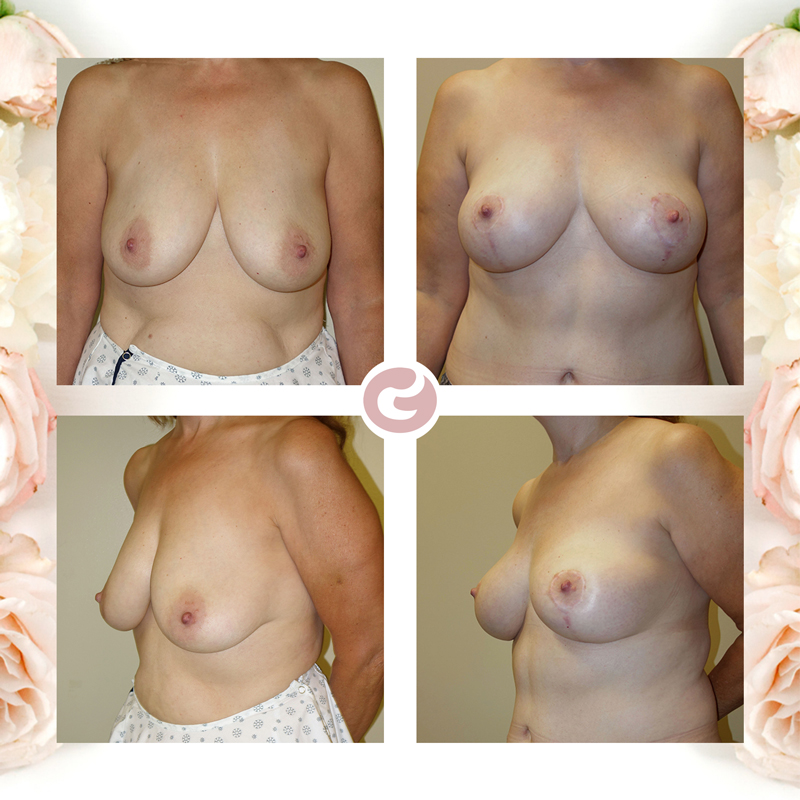

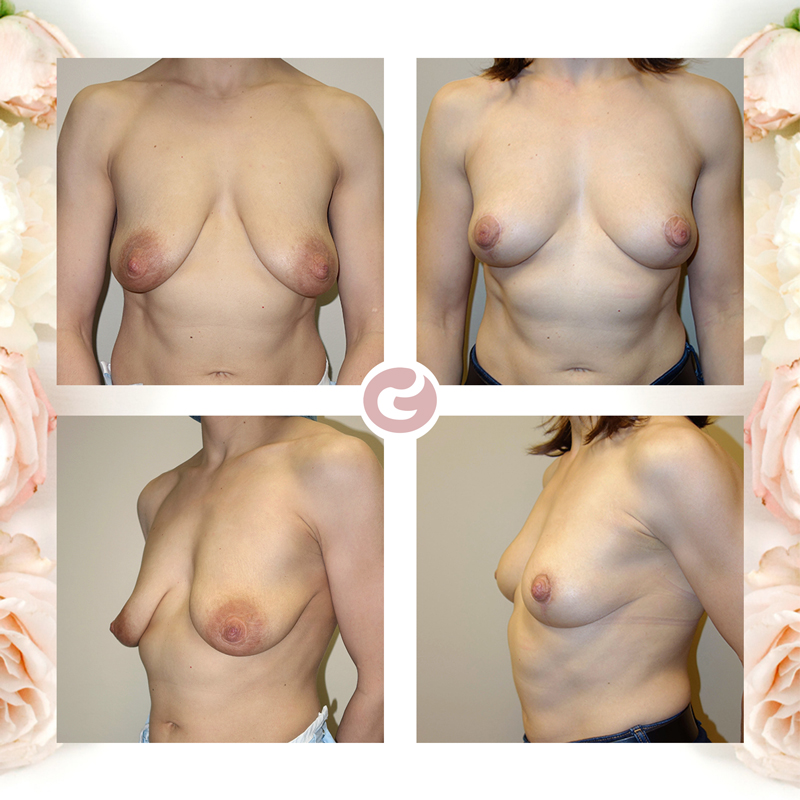
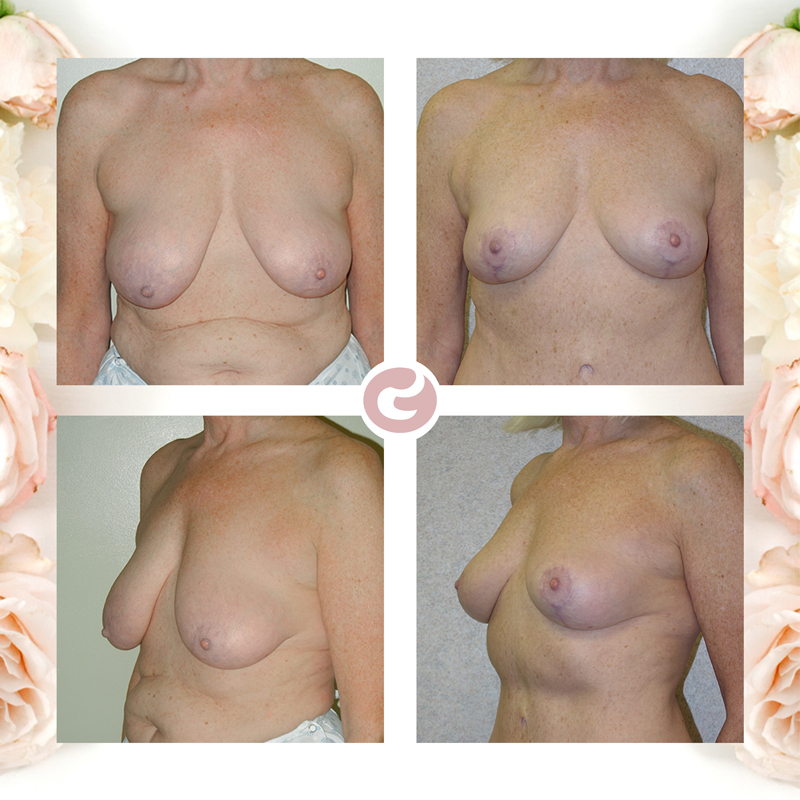
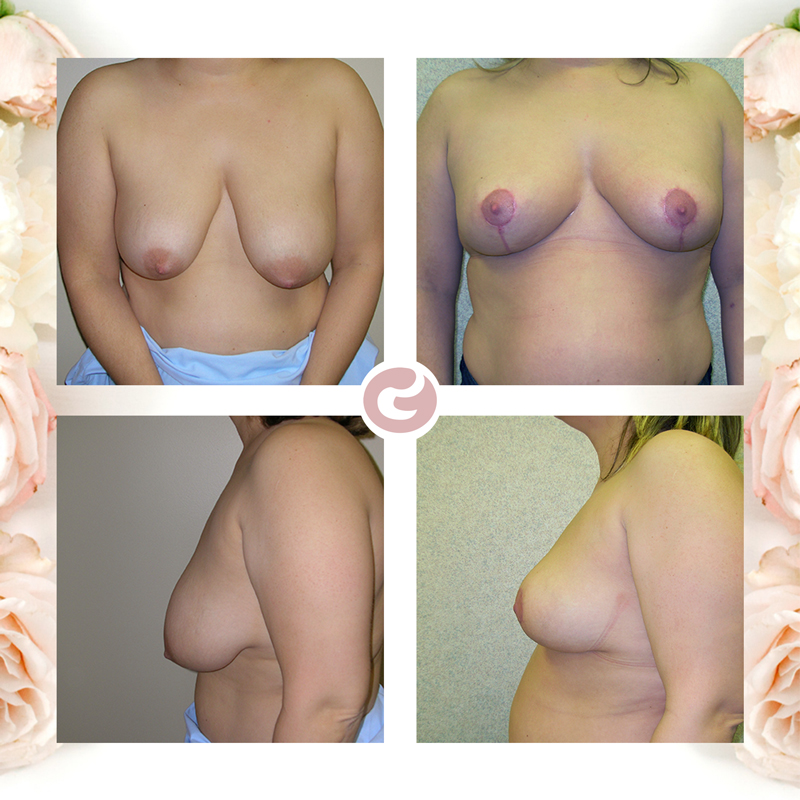
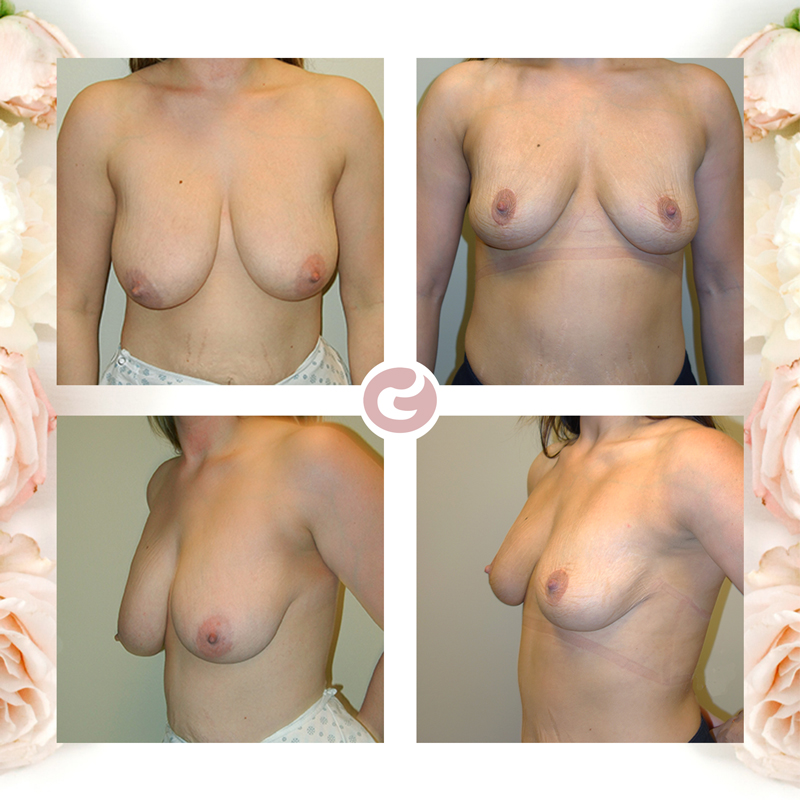
Review our footprint handout for more details.
“Our focus is to give you as natural a result as possible, while taking into account your particular issues and desires. What’s right for one woman may be very different from what another is trying to achieve. When you come in for a consult, we can use our experience to give appropriate recommendations for your individual circumstances – information that is sometimes hard to figure out from the internet. We want to work with you to determine what’s best for you and how we can help you accomplish your goals.”
– Dr. Hall-Findlay, plastic surgeon
Breast Lift
(Mastopexy) FAQ
What are the different types of breast lift techniques?
Vertical (lollipop) technique
This is by far the most common technique in our practice. The incisions go all the way around the areola, and then vertically down to the bottom of the breast. This way, the areola can be made smaller, sagging breast tissue can be removed or repositioned, and the skin can be redraped. This technique lifts and cones the breast, and is versatile both with and without an implant. Dr Hall-Findlay helped develop this technique and is a world-renowned innovator in this field.
Inverted-T technique
There are different ways to perform an inverted-T mastopexy. While we don’t perform this technique frequently in our practice, it is a good option if there is too much excess skin to have a good result with only the lollipop scar. The breast tissue is still rearranged, the nipple is elevated and the breast is reshaped. However, extra skin is also removed along the crease under the breast, adding the additional scar.
Periareolar (donut) technique
This technique is useful for a tuberous breast, but we don’t recommend it for most of our mastopexies. The tightness of the closure around the areola tends to flatten the breast, the scar quality can be poor, and the areola often widens. Many women ask about this technique due to the perception that there is less scarring, but we usually prefer the vertical technique for its superior reshaping.
Can mastopexy and augmentation be done at the same time or do I need two stages?
We commonly offer a breast lift and augmentation at the same time. The combination is more complex than either operation alone, but many women benefit from the addition of an implant at the same time as mastopexy. There have been some concerns raised about combining both a lift and an implant, but most experienced surgeons feel that, when performed properly, the result can be excellent.
How can I decide if I need mastopexy alone or with implant?
We usually perform mastopexy alone for women who have some sagging or deflation, but who still have a fairly significant amount of breast tissue that can be rearranged. We can improve shape and projection with mastopexy alone, but we can’t realistically offer significantly improved upper breast fullness without adding an implant.
For women who desire a lift but have very little breast tissue or would like to have more fullness in the upper part of the breast, an implant is often added.
Will mastopexy interfere with breastfeeding?
A breast lift is done with the goal of reshaping the breast, but preserving its function. The nipple is left attached to the underlying tissue. Every attempt is made to preserve breastfeeding ability and nipple sensation, but remember that some women are unable to breastfeed even without having breast surgery. We usually say that breast feeding potential is reduced by about 50%.
Should I wait until after pregnancy to have a breast lift?
Pregnancy and breastfeeding can change breast size, shape, and consistency. While there is no medical contraindication to pregnancy after cosmetic breast surgery, if you plan to have babies in the next 1-2 years, it may be better for you to wait until after you are finished having children so that your result will be more stable.
What are the potential complications associated with mastopexy?
As with any surgery, bleeding and infection are possible but happen infrequently. Difficulty breastfeeding and loss of nipple sensation are also concerns that we discuss with our patients. Scars can be raised, red, or itchy, and it can be challenging to achieve symmetry between the two breasts. Breasts will always change shape and re-droop to some extent with time, so it is important to have realistic expectations.
What is the recovery from mastopexy like?
The surgery is performed at the Banff Mineral Springs Hospital. We recommend taking 1-2 weeks off work, and 3-4 weeks off athletic activities. If an implant is added, the recovery may be slightly more than what you would experience with mastopexy alone.
Are breast lift results permanent?
Your breasts will continue to age over time, and you may notice that your breasts begin to droop again to a lesser extent. We like to follow patients over the course of many years, and find that vertical mastopexy has predictable staying power.
A breast lift is an excellent choice for enhancing the look of the breasts and creating a more youthful upper body profile. To learn more about this procedure, contact Banff Plastic Surgery at 403-762-2055.
WHAT IS THE BREAST FOOTPRINT?
Footprint is the term we use to describe the level at which your breasts are attached to your chest wall. Some women have a high footprint (high breasted) and a relatively short distance between the collarbone and the upper border of the breast. Other women have breasts that start out much lower on the chest wall (low breasted) with a longer distance between the collarbone and the upper border of the breast. We cannot alter your breast footprint; we can only alter your breast shape within its existing position.
The addition of a breast implant will raise the upper breast border slightly and this may make a low footprint look somewhat higher. Otherwise, your existing breast footprint and shape will be similar to what you had before augmentation, but fuller, with the implant centered behind the nipple. Some patients will say that they wish that they had had larger implants because they think that larger implants will sit higher on their chest. Unfortunately, the opposite occurs: larger implants sit lower and eventually succumb to the effects of gravity.
We're Worth the Trip
To learn more about our practice or the services we offer, contact Banff Plastic Surgery today at 403-762-2055.
Address
#217, 304 Old Canmore Road
Canmore, Alberta T1W 0J7
